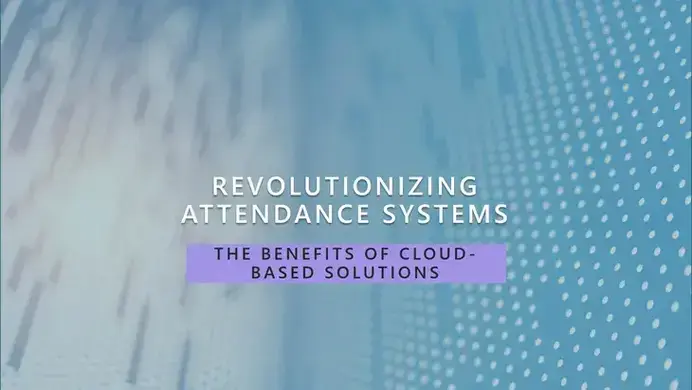The Role of Cloud-Based Attendance Systems in Modern Businesses
Published: Dec 09, 03:19 PM

In today’s business environment, organizations seek innovative solutions to enhance efficiency, accuracy, and scalability. One such advancement is the adoption of cloud-based attendance systems. These systems offer a seamless way to manage employee attendance, catering to businesses of all sizes and across industries.
What Are Cloud-Based Attendance Systems?
Cloud-based attendance systems are digital platforms that allow businesses to track and manage employee attendance data in real-time. Unlike traditional systems that rely on physical punch cards or on-premise software, cloud-based solutions operate on remote servers accessible via the internet. This means that attendance data is securely stored in the cloud and can be accessed from anywhere at any time.
Key Features of Cloud-Based Attendance Systems
- Real-Time Monitoring Instant updates on employee attendance and status.
- Remote Access Managers and HR teams can access attendance records from any location.
- Integration Capabilities Easily integrates with payroll systems and other HR tools.
- User-Friendly Interface Simple to use for employees and administrators alike.
- Scalability Adaptable for growing businesses with expanding workforces.
Advantages of Cloud-Based Attendance Systems
Improved Accuracy and Reduced Errors
Manual attendance tracking often leads to human errors. Cloud-based systems automate data capture, minimizing inaccuracies and ensuring precise records.
Enhanced Accessibility
With cloud technology, employees and managers can log in and view attendance records from any device with an internet connection. This is particularly useful for remote or hybrid teams.
Cost Efficiency
By eliminating the need for on-premise infrastructure and maintenance, businesses can significantly reduce operational costs. Subscription-based pricing models also make it a cost-effective choice.
Increased Security
Cloud-based systems employ robust encryption and security protocols to safeguard sensitive employee data against breaches and unauthorized access.
Compliance and Reporting
These systems simplify compliance with labor laws and regulations by providing accurate records and customizable reports for audits and reviews.
Use Cases of Cloud-Based Attendance Systems
- Remote Work Management Track attendance and productivity for employees working from home or remote locations.
- Shift-Based Industries Manage complex schedules in industries like healthcare, manufacturing, and retail.
- Educational Institutions Monitor staff and student attendance seamlessly.
Challenges and How to Address Them
- Internet Dependency Reliable internet connectivity is crucial. Businesses can mitigate this by ensuring backup connectivity options.
- Data Migration Transitioning from traditional systems can be complex. Proper planning and professional assistance can streamline this process.
- User Adoption Training employees on the new system can ensure smoother implementation and acceptance.
Future of Attendance Management
As businesses continue to embrace digital transformation, cloud-based attendance systems are poised to become a standard. Features like AI-driven insights, facial recognition, and integration with IoT devices are paving the way for more sophisticated attendance solutions.
Conclusion
Cloud-based attendance systems are revolutionizing how businesses manage workforce data. By improving accuracy, enhancing accessibility, and reducing costs, these systems align with modern business needs. Adopting such technology not only boosts operational efficiency but also empowers businesses to focus on strategic growth and employee satisfaction.
Top Blogs
Published: Nov 27, 2024

Multi-Venue, Anytime, Anywhere: Enhancing Attendance Management Across Locations
Published: Nov 27, 2024

Multi-Venue, Anytime, Anywhere: Enhancing Attendance Management Across Locations
Published: Nov 12, 2024

Touchless Entry: A New Era of Seamless and Hygienic Attendance Management
View All
